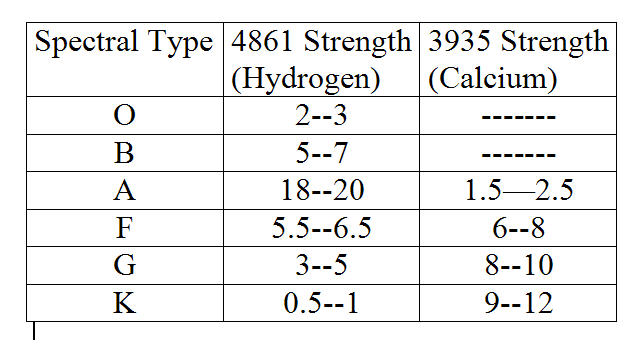
Measuring Real Stellar Specta
In this exercise, you will be measuring the equivalent widths of absorption lines in real spectra of real stars.
From the blackbody exercise, it was apparent that measuring B-V for all stars wasn't as accurate as one would like. The most accurate way to measure a stellar temperature is to measure equivalent widths of absorption lines in the spectra. As you can see in the spectra below, stars have lots of absorption lines superimposed on a blackbody background.

These correspond to specific energies of electron transitions in specific atoms. Measuring these will determined the temperature of the star. You will be measuring the equilvalent widths of real stellar spectra. I will demo how to use the following simulation in class. If you are at home and cannot make it class, please refer to this YouTube Tutorial If you DO NOT DO USE THIS TUTORIAL, you will likely be lost
Fire up the simulation and make the measurements
Comparing the Line Strength of two stars.
a) From the list under step 1 choose the star type labelled A5-7V and measure the equivalent width of the Hydrogen line at 4860 angstroms.
b) Now make the same measurement of the star G8IV
c) why was the measurement more difficult for the G8IV star?
d) Now try measuring the Calcium 3935 line in both stars. What is the behavior of the
H line and Ca line with spectral type?
using the table below, were your measurements roughly consistent with the ranges?
